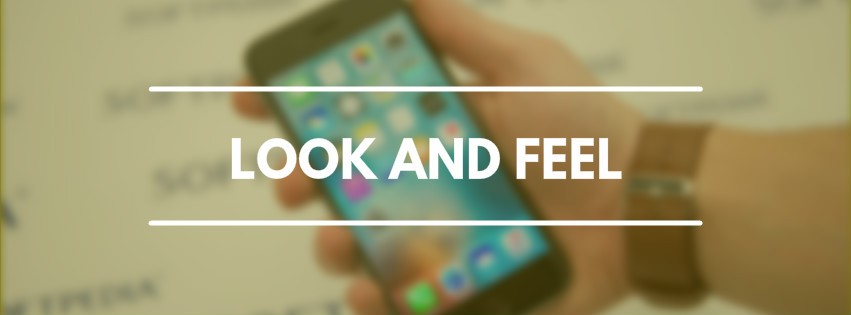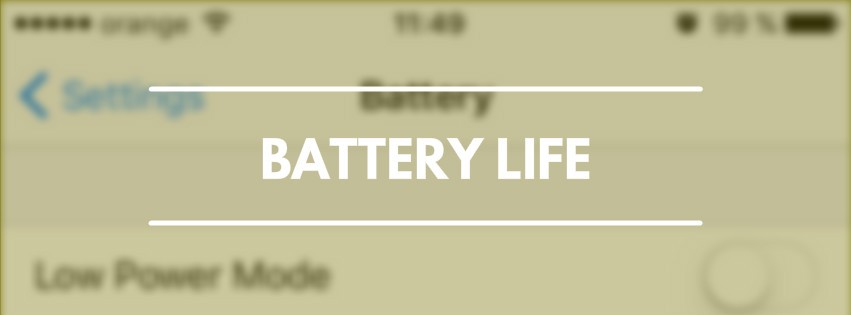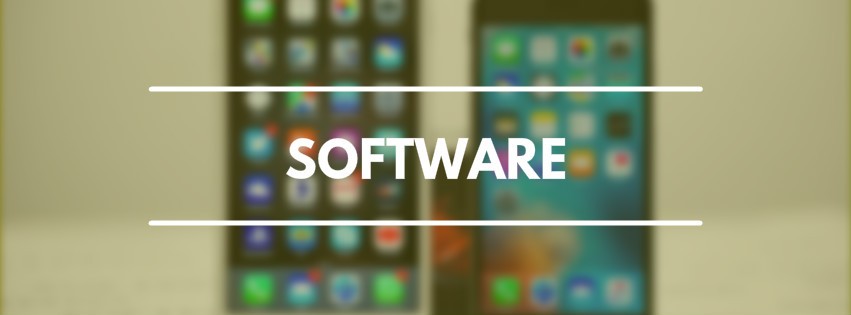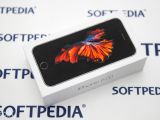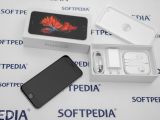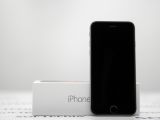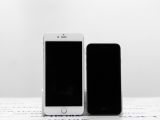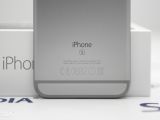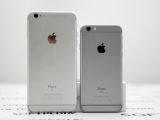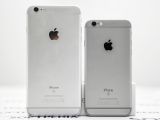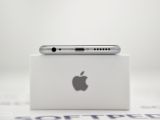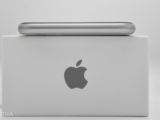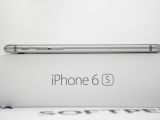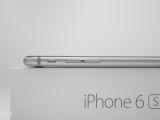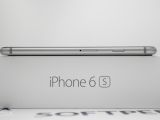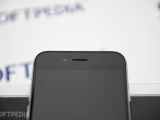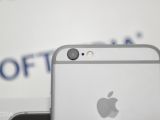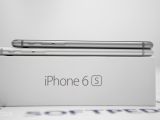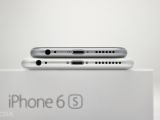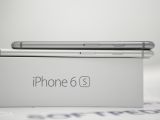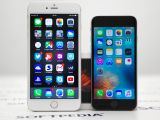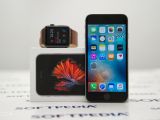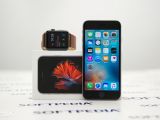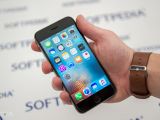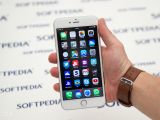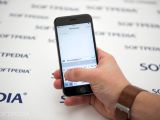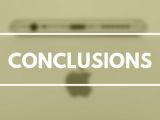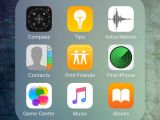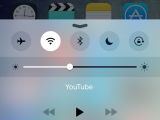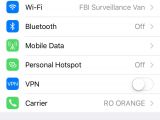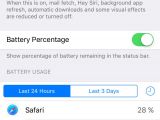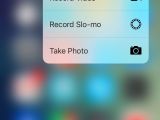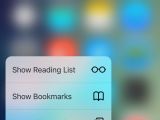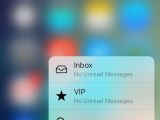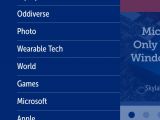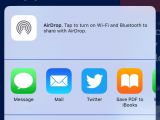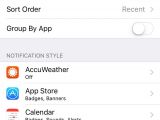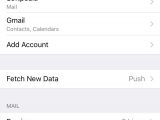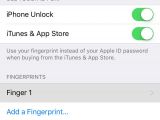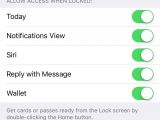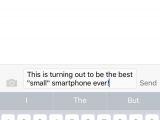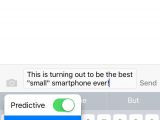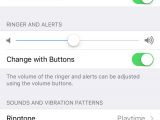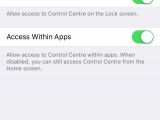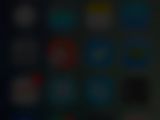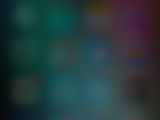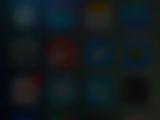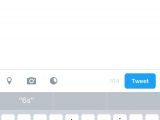| LOOK AND FEEL | HARDWARE |
|---|---|
| BATTERY | CAMERA |
| SOFTWARE | CONCLUSIONS |
Apple is looking to expand its iPhone portfolio with a smaller model that could arrive this March and feature a 4-inch screen, a metallic case, and a price that would make it an extremely appealing purchase.
While a smaller iPhone sounds really good for those who don't want to carry a phablet around all day long, it's worth mentioning that the upcoming 4-inch device won't be quite a flagship. It'll lack some functionality, including 3D Touch and others, so if you're looking for a smaller iPhone, the 4.7-inch model is your only option. At least for now, as Apple could expand its lineup even more in the coming years.
iPhone 6s was announced by Apple in September, when it showed up for the first time during the company's annual fall event alongside the 6s Plus. Both were the upgraded versions of the iPhone 6 and iPhone 6 Plus, respectively, and came with worthy improvements, such as 2 GB of RAM, a better camera, 3D Touch, and more.
The iPhone 6s is, in essence, a smaller version of the Plus, and hardware-wise, it's almost impossible to make a difference between the two. The design is also 100 percent similar, sans the size, but otherwise, they're like identical twins.
So what's the difference between the standard iPhone and the bigger Plus version? Is it worth buying the smaller model? Which one should I buy?
We'll try to answer all these questions in the next chapters, so continue reading to find out whether the iPhone 6s is a good buy or not.
#Read more: Apple iPhone 6s Plus review
First and foremost, it's worth mentioning that the iPhone 6s is made with the same materials as the bigger version and comes with the exact same design.
It's a mini-iPhone 6s Plus, if you like, so if you're already tried the phablet, there are no surprises here.
The device is made from the same durable aluminum which should be able to withstand the majority of shocks, unless you obviously throw it from the roof of your building. The 4.7-inch version has never been impacted by the famous bendgate scandal, but the S upgrade fixes it for the Plus model.
The design is the typical iPhone, but there's something very important to have in mind when comparing the small and the big models.
After having spent a lot of time with the Plus and started getting bothered by its dimensions, we've found the 6s extremely light and easy to hold in hand. The difference between the two pretty much speaks for itself: 138.3 x 67.1 x 7.1 mm (5.44 x 2.64 x 0.28 inches) for the 6s and 158.2 x 77.9 x 7.3 mm (6.23 x 3.07 x 0.29 inches) for the 6s Plus. In terms of weight, the 6s is clearly the better option: 143 grams versus 192 grams.
| iPhone 6s | iPhone 6 | iPhone 6s Plus | |
|---|---|---|---|
| Size | 138.3 x 67.1 x 7.1 mm (5.44x2.64x0.28 in) | 138.1 x 67 x 6.9 mm (5.44x2.64x0.27 in) | 158.2 x 77.9 x 7.3 mm (6.23x3.07x0.29 in) |
| Weight | 143 g (5.04 oz) | 129 g (4.55 oz) | 192 g (6.77 oz) |
Needless to say, the bigger the phone, the bigger the weight and obviously, the 6s Plus loses the battle here because of its larger battery.
But if you're looking for a phone that can be easily used with just one hand, carried around with little effort, and that can fit anywhere in your pocket, the 6s is the better option. It just feels more natural in your hand and it's so light that you could sometimes forget where it is. With the 6s Plus, you always know it's there and it's nearly impossible to carry it in your jacket, for example.
As far as hardware is concerned, there's almost no difference when comparing the device with the 6s Plus, except for the battery and the smaller display.
The 6s comes with a 4.7-inch IPS LCD screen that features 16 million colors, a resolution of 750x1334 pixels, 3D Touch support, and oleophobic coating. The 6s Plus has a 5.5-inch screen, also LCD, with a resolution of 1080x1920 pixels. The biggest difference here, except for the size, is the pixel density: 326 ppi for the 6s and 401 ppi for the 6s Plus.
| iPhone 6s | iPhone 6 | iPhone 6s Plus | |
|---|---|---|---|
| Display | 4.7 inches | 4.7 inches | 5.5 inches |
| Resolution | 750 x 1334 pixels | 750 x 1334 pixels | 1080 x 1920 pixels |
| Pixel density | 326 ppi | 326 ppi | 401 ppi |
Both devices come with the Apple A9 chip (dual-core 1.84 GHz Twister), which works together with the M9 co-processor that's in charge of powering sensors on the phone. Basically, to save battery power and avoid using the main processor for little things that would have a bigger battery impact than needed, Apple installed a second and smaller chip that only powers the device sensors, and uses very little power. This way, the main processor remains available all the time for the more demanding tasks and prevents losing battery life for little things.
The device uses six-core graphics in the form of PowerVR GT7600 and comes with 2 GB of RAM, an upgrade brought by the S version on both the standard model and the phablet.
The 2GB of RAM and the A9 chip combination leads to impressive performance in 99 percent of the time, and the iPhone 6s is currently one of the fastest and most responsive devices on the market. It's not as fast as the Nexus 6P, which is clearly a monster and its hardware specs pretty much speak for themselves, but the new iPhone performs unbelievably well. But undoubtedly, hardware upgrades are clearly needed, so Apple would better prepare something significant in terms of hardware for the iPhone 7.
| iPhone 6s | iPhone 6 | iPhone 6s Plus | |
|---|---|---|---|
| CPU | Apple A9 | Apple A8 | Apple A9 |
| GPU | PowerVR GT7600 | PowerVR GX6450 | PowerVR GT7600 |
| RAM | 2 GB | 1 GB | 2 GB |
| Storage | 16/64/128 GB | 16/64/128 GB | 16/64/128 GB |
The remaining 1 percent of the time, the iPhone 6s seems to suffer from small hiccups, which appear at random times and cause the device to have a less than a second freeze when launching apps. This usually happened on day one after setting the phone, but in some cases similar freezes also took place at a later time. A full reset solves the problem, but some slowdowns still happen every now and then.
In terms of storage, the iPhone 6s is available with the same configurations as its bigger brother: 16 GB, 64 GB, and 128 GB. No microSD card support is offered, so make sure you get the version that fits your needs. Keep in mind that the OS and the apps installed on the phone eat up a lot of space too.
Other than that, the iPhone 6s is the typical smartphone. It comes with a 12MP main camera and a 5MP secondary unit (we'll detail both in their own section), but also with Bluetooth 4.2, Wi-Fi, NFC for Apple Pay, Touch ID for fingerprint authentication, noise cancellation and a 3.5mm audio jack (which could be removed on the iPhone 7 and replaced with a Lightning connector).
Overall, the iPhone 6s's spec sheet is not outstanding, but Apple has made a terrific job when it comes to optimization and performance. It's one of the fastest and most reliable devices out there, and it's certainly the best choice in this size range.
Today's smartphones are capable of performing a very wide variety of tasks, so the bigger the battery, the more chances to get you through the day easily.
When Apple unveiled the iPhone 6s and the 6s Plus in September 2015, everyone was shocked to find out that instead of going for a bigger battery, Apple actually picked a smaller one, but continued to promise unrivaled autonomy. The change was needed because of the new hardware that was fitted under the case, include the 3D Touch module and the upgraded camera.
The smaller iPhone dropped from 1810 mAh on the 6 to 1715 mAh on the 6s, so everyone was concerned that the device might no longer be able to survive for 24 hours.
But Apple has made some serious software optimizations and despite the decreased battery, the iPhone 6s comes with impressive battery life. Before providing you with our test results, it's worth mentioning that battery life has been significantly improved in iOS 9.2, so this is the version you need if your iPhone 6s can get you through the day.
On average, our iPhone 6s could last for approximately 36 hours per charge, but can go up to 48 hours with light use. Heavy users will get at least 20 hours of battery life.
| Light use | 43 hours |
|---|---|
| Moderate use | 36 hours |
| Heavy use | 20 hours |
The small battery that Apple has picked for this model has another big advantage: it recharges blazingly fast, even without a fast charging system (word has it that Apple could introduce one on the iPhone 7). Recharging the iPhone 6s takes a little over an hour and charging it from a laptop takes approximately two hours.
Another advantage is that you can always carry a small external battery in your backpack should additional power be needed in the middle of nowhere. A 2,000 mAh external battery weighs around 150 grams, so you won't even feel it in your backpack.
The conclusion here is that although the iPhone 6s is not as good as the 6s Plus in terms of battery life, you won't suffer from battery anxiety because it not only lasts for 24 hours easily, but it also recharges very fast from any source.
Both the iPhone 6s and the 6s Plus received camera upgrades from the core models and this was one of the highlights of the September 2015 unveiling.
In the case of the 4.7-inch model, Apple upgraded the camera from 8MP to 12 MP, but specs remained almost the same: f/2.2, 29mm, phase detection autofocus, dual-LED (dual tone) flash, 1/3" sensor size, 1.22 µm pixel size, geo-tagging, simultaneous 4K video and 8MP image recording, touch focus, face/smile detection, and HDR (the very same features are on the 6s Plus too).
What's important to note, however, is that the smaller iPhone is still lacking OIS, just like the previous model did. The iPhone 6s Plus does have it though and the results are noticeable.
As for camera performance, the 4-megapixel upgrade indeed does make a difference, but not as big as you'd expect. Results are not so easily noticeable and Apple still relies a lot on post-processing, which isn't necessarily a bad thing, but it's living proof that better hardware is still needed.
Photos look generally good, with sharp colors and good contrast, while brightness is most of time adjusted correctly (you have the option to manually adjust exposure and thus control brightness when taking a photo, though). It can also shoot Live Photos, which are Apple's new big thing, that capture 3-second clips as images, but we've found this feature particularly unappealing, especially because it takes a lot of space on the device.
As far as video is concerned, the iPhone 6s excels, just like the Plus, and can shoot in 4K and full HD resolutions. Even with the lack of OIS, the resulting video looks quite good. Unfortunately, it's very shaky at certain times, especially if you move holding the camera and recording and in order to make everything look like it's being shot with a professional camera you need a tripod or a very steady hand. Vivid colors and automatically adjusted contrast that's almost unnoticeable to the naked eye are the highlights.
The front camera is a 5MP unit which seems to be the perfect setup for Facetime calls and selfies, but just like it usually happens, you'll be using the rear version most of the time.
As a conclusion, the camera of the iPhone 6s is good, but looking at competition, there's no doubt that hardware upgrades are needed. Photos shot with the iPhone are not as good as those made with a Nexus 6P or a Samsung Galaxy S6, for instance, where the combination of advanced hardware (bigger res) and heavy post-processing lead to more natural colors, better contrast, and excellent brightness levels.
Why are we comparing the iPhone 6s with the Nexus 6P tablet? Because right now, Google's Huawei device seems to be at the top of the list in terms of camera performance and the iPhone 6s features the same camera as the 6s Plus (which is a direct competitor to the Nexus).
iPhone 6s runs iOS 9.2, and although this new version of the operating system doesn't bring too much in terms of new features, it certainly makes a huge difference for battery life and performance.
The first iOS 9 release causes a plethora problems for iPhone users across the world, including huge battery drains and slowdowns that occurred all of a sudden. We've also received reports of devices overheating after upgrading to iOS 9, but version 9.2 seems to have fixed everything.
First and foremost, let's set one thing clear. The iPhone 6s rarely feels warm. Apple has done an amazing job at keeping the device cool, and it won't get hot unless you download an OS update, install apps, and watch 4K videos on YouTube. All at the same time. This helps the device perform without any hiccups and contributes to that unrivaled performance we've already praised.
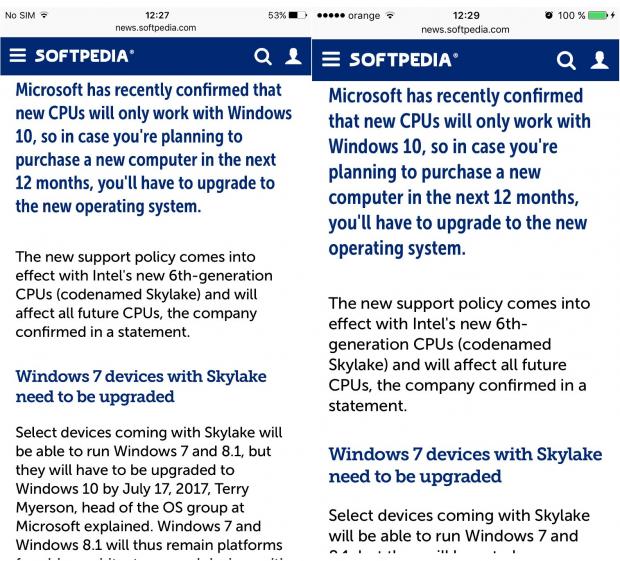
iOS has the advantage that other platforms such as Windows 10 Mobile and BlackBerry OS never had: a plethora of apps. Right now, iOS can easily compete against Android thanks to the number of apps available in the store and it's a well-known fact that developers creating apps for mobile devices look first at iOS and Android and only then (maybe) at the others.
Right now, pretty much every app out there exists on iOS and you won't feel left behind in any way.
All apps look absolutely terrific on the 4.7-inch screen, and if you come from a 6s Plus, you'll never feel it like a downgrade. Everything is perfectly scaled to this display, and in fact, iOS was first designed for the 4.7-inch screen and then upscaled to the 5.5-inch of the iPhone 6 Plus/6s Plus.
All in all, iOS 9.2 is a welcome update for iPhone 6s, as it significantly boosts battery life and improves performance. And more importantly, it fixes all the bugs in the original release.
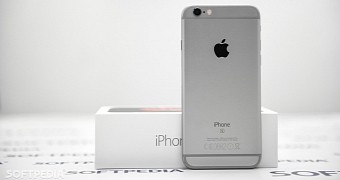
 14 DAY TRIAL //
14 DAY TRIAL // 